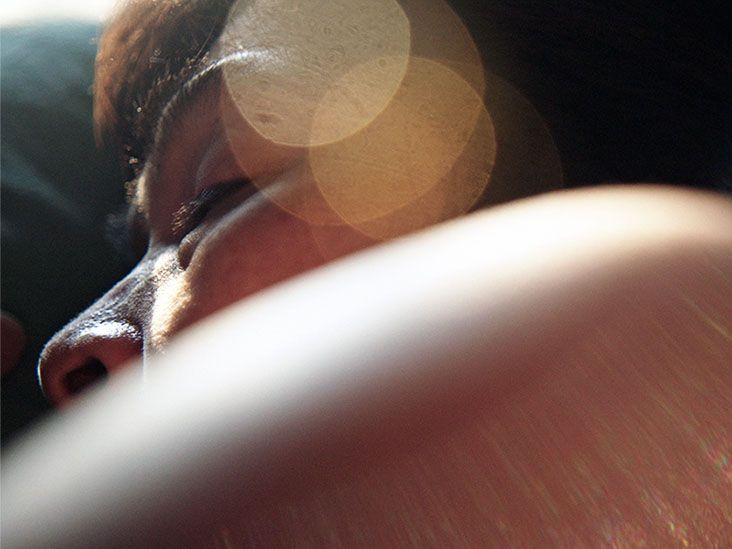The theory of types of borderline personality disorder (BPD) is controversial. There is some debate over whether there are various types and what those types may be.
BPD is a mental health condition that involves a persistent pattern of unstable mood, self-image, and interpersonal relationships. It also involves impulsivity.
Some experts believe there may be specific types or subgroups of BPD. A popular theory of this was laid out by Theodore Millon. His theory was that there are four types of BPD.
It is important to note that the Diagnostic and Statistical Manual of Mental Disorders, 5th edition, text revision (DSM-5-TR) does not acknowledge any types or subgroups of BPD.

Impulsive behaviors are a
According to the National Alliance on Mental Illness (NAMI), examples of impulsive behaviors include:
- self-destructive and high risk behaviors, including:
- dangerous driving
- sex without a condom or other barrier method
- sex with multiple partners
- misuse of alcohol or drugs
- bingeing behaviors, including:
- overeating
- overspending
- aggressive behaviors, including:
- physical fights
- outbursts
- other frequent displays of temper
Discouraged BPD is also known as quiet BPD. Individuals having discouraged BPD may hold their emotions inside rather than projecting them outward.
Fear of abandonment is another main symptom of BPD. Those with BPD may frantically try to avoid real or imagined abandonment by family or friends.
A case study from 2022 suggests that discouraged BPD may involve dependent and avoidant features, as well as unexpressed anger. The authors of the study go on to say that people with discouraged BPD may:
- internalize more
- be less likely to communicate their emotions
- be less impulsive
More research is needed to verify this subtype of BPD.
Another
This type of BPD may involve some of the same behaviors as impulsive BPD, such as self-destructive or high risk behaviors.
Some examples of these behaviors may include:
- substance misuse
- high risk behaviors, such as unsafe driving
- self-harming behaviors, such as cutting, hitting, or burning
- suicidal ideation or thoughts
Suicide prevention
If you know someone at immediate risk of self-harm, suicide, or hurting another person:
- Ask the tough question: “Are you considering suicide?”
- Listen to the person without judgment.
- Call 911 or the local emergency number, or text TALK to 741741 to communicate with a trained crisis counselor.
- Stay with the person until professional help arrives.
- Try to remove any weapons, medications, or other potentially harmful objects if it’s safe to do so.
If you or someone you know is having thoughts of suicide, a prevention hotline can help. The 988 Suicide and Crisis Lifeline is available 24 hours a day at 988. During a crisis, people who are hard of hearing can use their preferred relay service or dial 711 then 988.
Frequent and intense mood changes are one of the main aspects of BPD. Petulant BPD may involve rapid shifts in mood and emotions. For example, a person may swiftly transition from anger to sadness in an unpredictable manner.
People with BPD
Petulant BPD may involve certain characteristics, such as:
- experiencing intense frustration and anger
- engaging in frequent emotional outbursts that may appear irrational
- having difficulty finding and keeping relationships
- experiencing a reluctance to admit to any wrongdoing
- having impatience in typical social situations
- displaying frequent passive-aggressive behaviors
Learn more about petulant BPD.
The four types hypothesized by Millon are only one example of potential types or subgroups of BPD.
Mental Health UK lists two types of BPD, which they refer to as emotionally unstable personality disorder (EUPD):
- Borderline-type: This may involve more difficulty with self-harming behaviors, relationships, and feelings of emptiness.
- Impulsive-type: This may involve more issues with impulsive behaviors and feelings of anger.
- affective
- impulsive
- aggressive
- dependent
- empty
Other research from 2023 notes three subtypes of BPD:
- The non-labile type shows few dissociative symptoms and demonstrates affective stability.
- The dissociative/paranoid type involves:
- paranoia
- dissociation
- lack of identity disturbance
- lack of abandonment fear
- The interpersonally unstable type demonstrates interpersonal aggression and fear of abandonment.
Research into BPD is ongoing. However, there are currently no official types or subgroups of the condition.
Mental health resources
Visit our dedicated hub for more research-backed information and resources on mental health and well-being.
The DSM-5-TR does not currently recognize any types or subgroups of BPD.
However, there are experts who hypothesize specific types of the condition. This includes Theodore Millon, who laid out four types of BPD. The four types are impulsive, discouraged, self-destructive, and petulant.
The theory of these types involves individuals experiencing certain aspects of BPD more severely than others.
Other research and organizations have also theorized certain types of BPD. However, there are no current official types of the condition.


